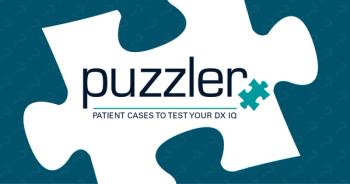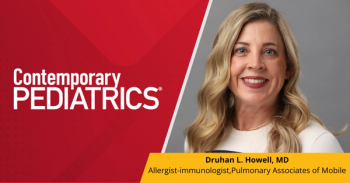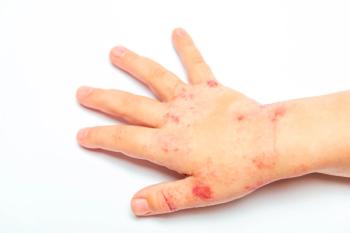
Pediatric patients with AD have an increased risk of type 2 inflammatory diseases
A better understanding of this atopic diathesis and the atopic march often seen in pediatric patients is necessary to optimally treat and manage the patient population, ideally in a multidisciplinary setting.
Many pediatric patients with atopic dermatitis (AD) have an atopic diathesis or predilection for having other type 2 inflammatory diseases beyond cutaneous manifestations which can complicate their clinical picture and create treatment and management challenges, a recent study1 found. As such, it behooves the astute clinician to be wary of the atopic march that AD patients have the potential for, as well as to follow a multidisciplinary treatment and management approach to optimally care for this patient population.
With a prevalence estimated to range between 10% to 20% in children and adolescents in the United States, AD is a chronic, immune-mediated type 2 inflammatory skin disease typically characterized by intensely pruritic dry eczematous skin, the debilitating effects of which can often be the cause of significant anxiety and a decreased quality of life in patients and their caregivers. Pediatric patients with AD are often also stricken with type 2 inflammatory diseases including conjunctivitis, rhinitis, urticaria, asthma, eosinophilic esophagitis, and chronic rhinosinusitis/nasal polyps.
“We certainly know that, in patients with AD, these T-cell driven type 2 inflammatory diseases go hand-in-hand, particularly when there is more severe atopic skin disease. Our study reinforces the association of having atopic comorbidities with having more severe AD,” said Amy S. Paller, MD, chair of the department of dermatology and professor of pediatrics at Northwestern University School of Medicine, Chicago, Illinois.
Using a large claims database in the US (IBM MarketScan 2013-2017), Paller and fellow colleagues recently conducted a study to investigate the prevalence and incidence of type 2 inflammatory diseases in pediatric patients with AD. The prevalence of conjunctivitis, rhinitis, urticaria, asthma, eosinophilic esophagitis, and chronic rhinosinusitis/nasal polyps was assessed at the 12 months’ post-index date, and the incidence was assessed among patients 0-2 years of age. The study included a total of 244,766 AD and matched non-AD patients having an average age of 6 years.
Researchers found that the prevalence and incidence of type 2 inflammatory diseases were higher among those patients with AD. Data also showed that the overall prevalence of asthma, eosinophilic esophagitis, urticaria, and rhinitis more than doubled at this early age, and was highest with severe AD.
“One challenge with using claims databases is the ambiguity of diagnostic ICD codes, which are different for “AD” versus “eczema”. One has to choose between the strict code (“AD”) and a code that includes a variety of forms of dermatitis (“eczema”),” said Paller.
To provide optimal and holistic care, dermatologists need to remember to ask the parents of young AD patients about signs of these atopic comorbidities. A multidisciplinary approach involving close communication between the dermatologist and allergologist/immunologist is important if these signs are detected. Of course, asthma cannot formally be diagnosed until the child can undergo pulmonary function testing, typically 5 years of age or older.
“As new medications become available that can concurrently treat allergic disorders in addition to AD, understanding at baseline the concurrent comorbidities and tracking their improvement should be the goal. Through good communication with the parents’ allergist and documentation of effect, therapy may be simplified, and the burden of disease reduced,” Paller said.
Disclosure: Paller is an employee of Northwestern University and has been a consultant with honorarium for Regeneron Pharmaceuticals and Sanofi, and an investigator for Regeneron Pharmaceuticals.
Reference:
- Paller AS, Mina-Osario P, Vekeman F, Boklage S, et al. Prevalence of type 2 inflammatory diseases in pediatric patients with atopic dermatitis: Real-world evidence. J Am Acad Dermatol. 2022 Apr;86(4):758-765. doi: 10.1016/j.jaad.2021.10.038.Epub 2021 Oct 28.
Newsletter
Access practical, evidence-based guidance to support better care for our youngest patients. Join our email list for the latest clinical updates.








